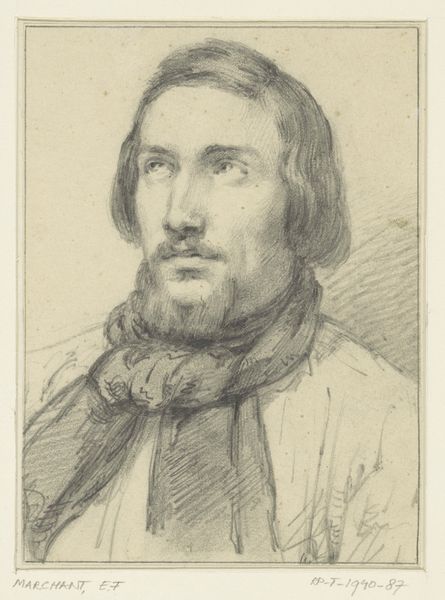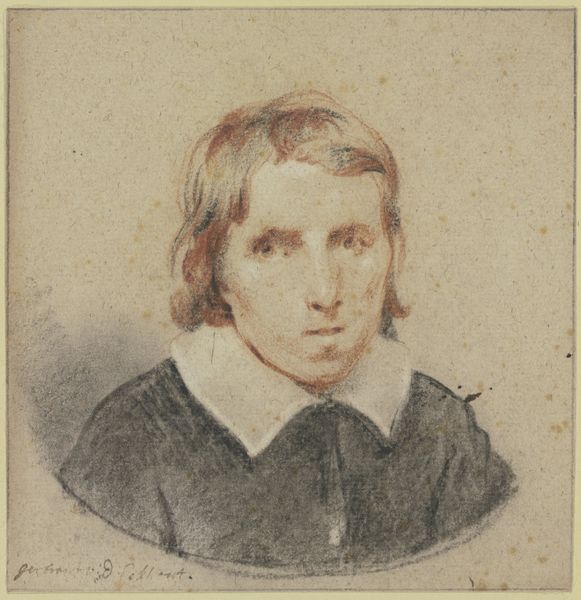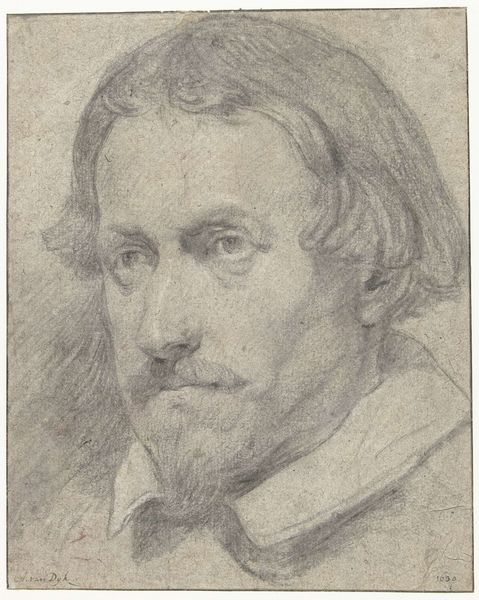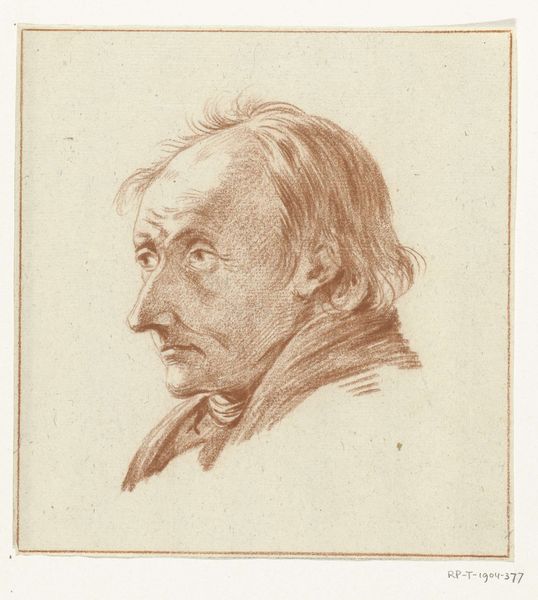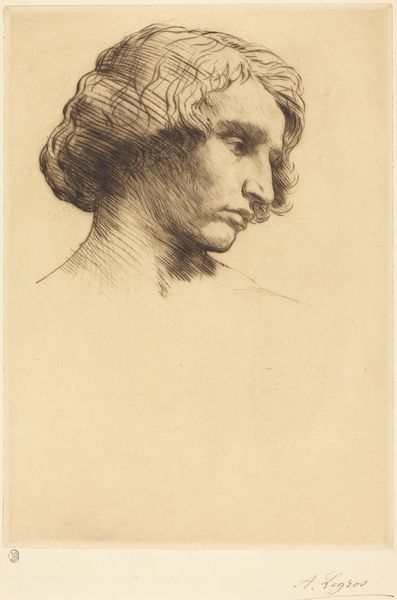
drawing, print, paper, ink, pencil, pastel
#
portrait
#
pencil drawn
#
drawing
# print
#
charcoal drawing
#
paper
#
ink
#
pencil drawing
#
romanticism
#
pencil
#
portrait drawing
#
pastel
Dimensions: 5 3/8 x 4 3/16 in. (13.7 x 10.6 cm)
Copyright: Public Domain
Curator: There’s an understated gravity to this nineteenth-century portrait drawing, simply titled, “Portrait of a Man,” currently residing here at the Metropolitan Museum of Art. Editor: It’s quite evocative, isn't it? The use of, what seems like, sepia ink gives the man’s visage a pensive, almost melancholic air. The smudging around the collar and the loosely rendered hair contributes to a feeling of fleeting observation. Curator: Precisely. Considering its period, the drawing participates in a larger societal trend that saw increased attention placed on individualism and interiority. Portraits during this time became less about depicting status, more about conveying the sitter's emotional and psychological state. Editor: And in this specific instance, his faint mustache and open collar speak volumes. There is a certain bourgeois nonchalance that underscores this era. Was the Romantic period interested in expanding archetypes? Did artists move beyond images of aristocracy? Curator: Certainly. This work presents that shift quite plainly. One must note, though, that what appear to be stylistic choices reflecting a newfound emphasis on the ‘authentic’ self also represent constraints and power structures. For example, limited access to artistic training often prevented women and people of color from shaping their own narratives through art. Their stories are either absent or filtered through a patriarchal and colonial gaze. Editor: Yes, context is crucial. Thinking about those erasures, the way the drawing is unfinished around the edges could be interpreted as an echo of untold narratives. We're seeing what is prioritized by those in power to record. The blank space is the unknown subject's identity being filled in by today's assumptions and perhaps misremembering history. Curator: It prompts consideration about who gets remembered and how those representations reflect historical power dynamics. I agree that, when looking at art from any era, the art speaks on its own, but in context with sociopolitical settings we can start to consider the greater truths about that artwork's creation and provenance. Editor: Absolutely. By acknowledging the complexities of its time, including omissions and biases, we can approach this portrait with a more critical and nuanced appreciation. Acknowledging gaps while expanding our view of art history. Curator: I find that thought insightful; it encourages us to see beyond the single image and think about the broader socio-political conditions shaping what’s on display. Editor: A point of view for which I’m deeply grateful, illuminating what a portrait conceals as much as it reveals.
Comments
No comments
Be the first to comment and join the conversation on the ultimate creative platform.
